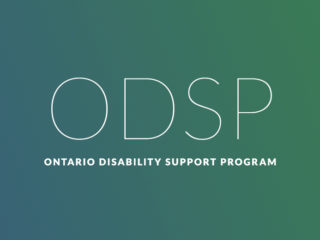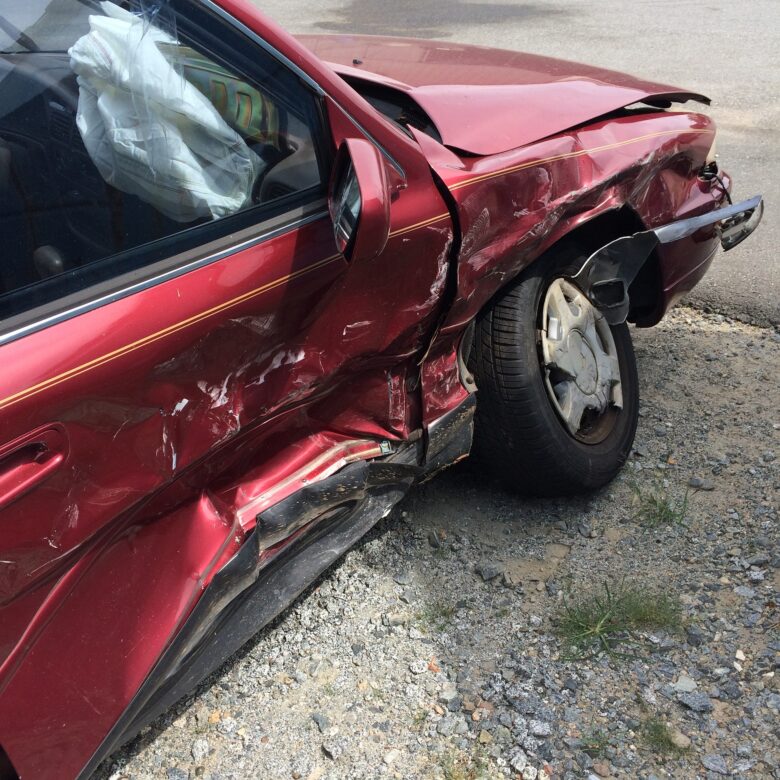Full Decision
Court of Appeal sets aside trial decision favouring defendants, orders new trial, and awards costs against defendants for trial and appeal
MATERIAL FACTS
This was a motor vehicle accident which initially proceeded to a 20 day Jury Trial reported at 2017 ONSC 2452 and a Costs Order reported at 2017 ONSC 4102. The Appeal was heard September 26, 2019, and reported on April 21, 2020. At Trial the Jury found the Defendant liable for the subject collision, and awarded $45,000 in general damages and $30,000 in special damages.
Prior to Trial, the Plaintiff settled her Accident Benefits claim with Allstate for an all-inclusive sum of $82,300 including $890.64 for transportation, $6,252 for housekeeping, $91,246.24 for IRB, $28,360.43 for medical expenses, and $32,667.32 for medical rehab.
Ms. Cunningham refused to accept even 1% of liability for the subject collision and required the Plaintiff to sue her insurer, Allstate, pursuant to the unidentified motorist provision; however there was no evidence in support of this Defense. Allstate was driven to considerable involvement on the basis of Ms. Cunningham’s meritless Defence. Lauwers J.A., at [11] indicated that Allstate’s participation as a party ‘added significantly to the complexity and the costs of the trial for no good purpose’. Cavanagh J., made a Sanderson Order respecting costs in favour of Allstate in the amount of $98,813.06 as against Ms. Cunningham at the end of the Trial.
Once the Trial was completed, the Defendants brought a Threshold Motion where they were wholly successful in reducing General Damages to zero, and the offsets of the combined accident Benefits settlement reduced special damages equally to zero. The outcome was that the Plaintiff was required to pay $311,845.34 in adverse costs and disbursements. The Appellant appealed both the Trial Decision and the Threshold Decision.
The Plaintiff was a self-represented Spanish speaking claimant utilizing an interpreter throughout the Trial. The Defendants were represented by Counsel, David Zuber and Michael Best. Trial proceeded by way of a Jury and with The Honourable Cavanagh J. The Court of Appeal decision was written by The Honourable Lauwers J.A with the Court concurring.
The Defence strategy at trial to convince the Jury that the Plaintiff was a ‘Malingerer’ consisted firstly of the Defense relying upon the truth of a treating psychiatrist’s pre-accident letter concerning the Plaintiff’s pre-accident state, but the Defence did not call the Psychiatrist as a witness at trial. Second, the Defense promoted a ‘secondary gain theory’ utilizing the accident benefits settlement. Third, the Defense worked to exclude from the Jury and the Trial the substantive evidence of the Plaintiff’s experts. The Defense portrayed the accident benefits settlement as an undeserved windfall, while the Court denied the Plaintiff the ability to justify the settlement by the exclusion of her expert evidence.
ISSUES
1. Whether the Appellant suffered substantial trial unfairness, requiring the Trial Decision, to be set aside and a new Trial ordered contextualized as follows:
- the preparation, content, delivery and use of the so-called “Joint Trial Brief”;
- the Defense’s treatment of expert evidence;
- the Defences use of information about the Plaintiff’s accident benefits settlement; and
- the role of the Trial Judge and counsel where one party is self-represented.
2. Whether the refusal to strike the Jury amounted to Trial unfairness; and
3. Whether the Threshold Decision should be set aside under the circumstances.
BRIEF ANSWER
Yes. A new trial is ordered as the ‘interests of justice plainly require that to be done’: Brochu v. Pond (2002), 62 O.R. (3d) 722 (C.A.) at [68]. Moreover, the Appellant has shown that a ‘substantial wrong/miscarriage of justice has occurred’: s. 134(6) of the Courts of Justice Act, R.S.O. 1990, c. C.43 and Vokes Estate v. Palmer, 2012 ONCA 510, 294 O.A.C. 342, at [7].
- A selectively redacted document dump on the eve of Trial by the Defendants became the basis of a trial record in an unfair way that was inconsistent with trial practice directions;
- The Trial Judge refused to allow one of the Plaintiff’s expert witness to testify, Dr. Becker, and permitted the Defendants to rely upon the truth of the contents of a medical record where the corresponding doctor was not called by them at Trial;
- Evidence from the settlement of the Plaintiff’s accident benefits claim was not properly admitted into evidence before the Jury;
- As a self-represented litigant, the Plaintiff was entitled to, but did not get active assistance from the Trial Judge to ensure fairness of the proceeding, or get basic fairness from trial Defence Counsel as Officers of the Court;
- The Self-represented status, use of an interpreter, and length at which the trial was proceeding coupled with much frustration for all involved was unfair to the Plaintiff. However, the new Trial Judge will decide whether they will strike the Jury, not this Court.
- The skewed orientation in the evidence that went to the jury permeated into the trial judge’s threshold decision, causing unfairness and required setting aside the threshold decision.
ANALYSIS
“Joint Trial Brief”
On the eve of Trial, the Defense document dumped a selectively redacted 16 volume Joint Trial Brief upon the Plaintiff, who requires the assistance of a Spanish/English interpreter. The Defense was well aware of the Plaintiff’s language barriers. Lauwers J.A., cited 1162740 Ontario Ltd., v. Pingue, 2017 ONCA 52, 135 O.R. (3d) 792 at [14] noting that ‘The goal of a trial judge in supervising the assembly of a trial record is completeness and accuracy, so that the panel of this court sitting on the appeal can discern without difficulty exactly what was before [the trial judge] at any moment in the course of the trial’.
The “Joint Document Brief” was prepared by the Defense without input from the Plaintiff. The late delivery also put the Plaintiff at a disadvantage. Moreover, the volumes in the “Joint Document Brief” were marked as numbered exhibits. Numbered exhibits as opposed to lettered exhibits, go in with the Jury during it’s deliberations: see Pingue at [17].
Initially, the Plaintiff’s expert report from Dr. Becker was included in the numbered exhibits. Subsequently, it was struck by the Defense and then not marked as a lettered exhibit and filed with the Court. The record would not otherwise have included it for an appeal, but for the Plaintiff’s inclusion within the Appeal Record.
Medical reports and records favouring the Plaintiff’s claim were included within the “Joint Document Brief” however they were redacted by the Defense and thus excised from the Jury. Lauwers J.A., considered Blake v. Dominion of Canada General Insurance Company, 2015 ONCA 165, 331 O.A.C. 48, at [54]:
When a document brief is tendered at trial, the record should reflect clearly the use the parties may make of it. Such use may range from the binder’s acting merely as a convenient repository of documents, each of which must be proved in the ordinary way, through an agreement about the authenticity of the documents, all the way to an agreement that the documents can be taken as proof of the truth of their contents. Absent an agreement by the parties on the permitted use of a document brief, the trial judge should make an early ruling about it’s use.
While these flaws in the management of the Trial Record cause unfairness, they are not fatal in and of themselves under the circumstances. However, they did unfairly enable the Defense strategy of keeping evidence favourable to the Plaintiff, from the Jury and the Trial Record. Lauwers J.A., goes on at [33-35] with insightful commentary on how the court should have addressed the issues at the outset.
The Use of Expert Evidence
Lauwers J.A., identified two issues of concern in the use of expert evidence at Trial. The first relates to the refusal to allow Dr. Becker to testify as to the Plaintiff’s injuries and the second relates to the use of the treating psychiatrists pre-accident opinion letter [truth of the contents] while the defence did not call him at trial as a witness.
The admissibility of expert opinion and then the use of expert opinion without the need to call the doctor who prepared the opinion are outlined by Lauwers J.A. at [39]:
Four elements are required to meet the threshold for admission of expert evidence:
- the evidence must be relevant;
- it must be necessary in assisting the trier of fact;
- no other evidentiary rule should apply to exclude it; and
- the expert must be properly qualified.
Then the Trial Judge must execute the gatekeeper function: White Burgess Langille Inman v. Abbott and Haliburton Co., 2015 SCC 23, [2015] 2 S.C.R. 182 at [19]; R. v. Abbey, 2017 ONCA 640, 140 O.R. (3d) 40 at [47-48].
Lastly, the elements give rise to a proviso: whether a person who has expertise, but who is not qualified as an expert witness under Rule 53.03 o the Rules of Civil Procedure, R.R.O. 1990, Reg. 194, still provide expert opinion?
In short, yes. see Westerhof v. Gee Estate, 2015 ONCA 206, 124 O.R. (3d) 721, leave refused, [2015] S.C.C.A. No. 198. The two examples are participant experts who form opinions based on their participation in the underlying events, such as treating physicians, and non-party experts who are retained by a non-party to the litigation and who form opinions based on personal observations or examinations that relate to the subject matter of the case. For example, a medical examiner for an accident benefits claim.
However in reviewing the pre-accident psychiatrists letter relied upon by the Defense, as to the truth of it’s contents, Lauwers J.A., concluded that in doing so made it hearsay evidence. This type of evidence ‘is presumptively inadmissible because – in the absence of the opportunity to cross examine the declarant at the time the statement is made – it is often difficult for the trier of fact to assess its truth’: R. v. Bradshaw, 2017 SCC 35, [2017] 1 S.C.R. 865, at [1].
Exceptions to the hearsay evidence rule are contained within s. 35 and s. 52 of the Evidence Act. First, if the record is a business record, made ‘in the ordinary course of any business and if it was in the usual and ordinary of such business to make such writing or record at the time of such act.’ That evidence is admissible: s. 35(2). Section 35 relates to medical reports. ‘it permits the court to allow the report to be admitted into evidence without the need to call the practitioner. Then the opinion can be accepted for the truth of its contents.’
However, Lauwers J.A., points out at [45] that the Trial Judge must allow a request by a party to cross-examine the medical practitioner: Kapulica v. Dumancic, [1968] 2 O.R. 438 (C.A.); Reimer v. Thivierge, [1999] 46 O.R. (3d) 309 at [12-15].
There are limitations: Westerhof v. Gee Estate, at [103]:
Because these reports were tendered under s. 35 of the Evidence Act, the opinions concerning causation were not admissible for the truth of their contents, [citing: Robb Estate v. Canadian Red Cross Society, (2001) 152 O.A.C. 60 (Ont. C.A.) at [152]] Further, the appeal record contains no indication that notice was served for the admission of these reports under s. 52 of the Evidence Act [emphasis added].
The difference between s. 52 and s. 35 is that within s. 52 it is permitted to admit evidence of opinion as to diagnosis contained in medical reports signed and prepared by qualified practitioners as an alternative to oral testimony.
As such, the evidence of Dr. Becker ought to have been admissible and put to the Jury. It contained substantive commentary from other medical experts, such as Dr. Rosenblatt (Psyche) which supported the Plaintiff’s claim. Lauwers J.A. at [57] concluded that there was no reasonable legal basis on which he evidence of Dr. Becker could be excluded in light of s. 52 of the Evidence Act. Dr. Becker provided a summative report attaching the individual reports of multiple specialized assessors, which is not unusual in the context of a claim for accident benefits. It was an error not to allow Dr. Becker to testify and an error to exclude his report from the Trial Record, given that the Plaintiff served a notice under s. 52 of the Evidence Act.
‘It should be remembered that any time a court excludes relevant evidence the Court’s ability to reach a just verdict is compromised’: Hunter v. Ellenberger, (1988), 25 C.P.C. (2d) 14 (Ont. H.C.). Lauwers J.A., at [60] concluded that allowing the defence experts to testify and offer opinions contrary to Dr. Becker and Dr. Rosenblat presented a skewed picture to the Jury and was grossly unfair to the Plaintiff.
Lauwers J.A. concluded at [75] that the Plaintiff properly served a notice under s. 52 of the Evidence Act and was entitled to refer to and rely upon Dr. Becker’s report and the reports that it summarized. The Plaintiff was entitled to call Dr. Becker as a witness and was entitled to have Dr. Becker explain his opinion to the Jury. If the Defense wished to dispute Dr. Becker’s report, counsel could have cross-examined him.
Dr. Sanchez Opinion – pre-accident psychiatrist letter
The Defense asserted and relied upon the truth of the contents of Dr. Sanchez letter opining as to the Plaintiff’s pre-accident psychological state, but did not call Dr. Sanchez at trial as a witness. This opinion was placed within the Defense’s statement of its position that the Trial Judge included within the Jury Charge.
By including Dr. Sanchez letter within the “Joint Document Brief” and making that brief a numbered exhibit, it was easy for Defense counsel to use this evidence for its hearsay purposes. This report was a substantive tool used by Defense counsel in the cross-examination of the Plaintiff, other medical witnesses, in closing argument and the Jury Charge.
In reviewing the Jury Charge at [68] Lauwers J.A., noted that the commentary about hearsay evidence was not cautioned with respect to Dr. Sanchez opinion. This ‘ratified the Defenses abuse of the opinion for hearsay purposes’.
Lauwers J.A., concluded at [74] that s. 35 of the Evidence Act is not a proper way to get medical opinion evidence admissible for the truth of its contents. Section 35 relates to business records and the ordinary notations made in such records. The case law is clear, where the report is that of a medical practitioner s. 52 is applicable. Once the Plaintiff objected, as she did, the Trial Judge was required to refuse to admit Dr. Sanchez report for the truth of its contents unless he was presented for cross-examination. this error of law was procedurally and substantially unfair to the Plaintiff.
The Use of Insurance Settlement Information
The accident benefits settlement was utilized as a means to the Defense strategy. It was used as an attack on her credibility, her reliability, and the credibility and reliability of her witnesses and experts. Lauwers J.A., at [79-80] summarizes the traditional and current view of discharging the Jury on mention of a reasonable inference that the Defendant was insured. In short, the mention of insurance no longer necessarily results in the Jury’s automatic discharge ‘because the court understands that Juries share the general public awareness that motor vehicles are insured’.: Hamstra v. British Columbia Rugby Union, [1997] 1 S.C.R. 1092.
Lauwers J.A., at [87] discussed the hybrid system of Ontario’s compensation of injured people in motor vehicle accidents. Citing Meyer v. Bright, (1993), 15 O.R. (3d) 129, [1993] O.J. No. 2446 (C.A.) at [6]: The Plaintiff’s access to the at-fault tort system is limited, but the Plaintiff is given access to no-fault accident benefits for income loss, and medical and rehabilitation expenses. The system is based on ‘an exchange of rights wherein the accident victim loses the right to sue unless coming within the statutory exemptions, but receives more generous first-party benefits, regardless of fault, from his or her own insurer’. the system is ‘designed to control the cost of automobile insurance premiums to the consumer by eliminating some tort claims’.
While separate (Tort and accident benefits claims), they do overlap when reconciled with awards of damages. Section 267.8 of the Insurance Act is intended to prevent double recovery by the Plaintiff. the functioning of the system is explained in Cadieux v. Cloutier, 2018 ONCA 903, 143 O.R. (3d) 545 at [10-11, 22-24, 85-86], leave to appeal refused [2019] S.C.C.A. No. 63.
Three Silo’s of benefits categories from accident benefits claims must be taken into account as possible reductions of Tort awards as follows: (see Basandra v. Sforza, 2016 ONCA 251, 130 O.R. (3d) 466 affirmed in Cadieux).
- past income loss and loss of earning capacity;
- health care expenses including attendant care costs; and
- pecuniary losses such as housekeeping costs.
Lauwers J.A., explains at [90] that the Trial Judge reconciles the no-fault benefits received by the Plaintiff with the award of tort damages after the Jury’s damages verdict by reducing the tort award. The instruction to the Jury is that they are to ‘make their award, if any, on a gross basis with no deduction for any collateral benefits’ on the basis that the Judge will make any adjustment: Malfara v. Vukojevic, 2014 ONSC 6640.
The Law of Evidence
Evidence is admissible if it is relevant to a fact in issue and not subject to an exclusionary rule. The Trial Judge has discretion to refuse to admit evidence where its prejudicial effect would exceed its probative value: Draper v. Jacklyn (1969), [1970] S.C.R. 92. Spence J., at [98] stated:
The occasions are frequent upon which a Judge trying a case with the assistance of a jury is called upon to determine whether or not a piece of evidence technically admissible may be so prejudicial to the opposite side that any probative value is overcome by the possible prejudice and that therefore he should exclude the production of the particular piece of evidence.
That principle, cited at [91] by Lauwers J.A., also applies generally beyond physical evidence along with the Trial Judges residual Discretion to exclude evidence: R. v. Lyttle, 2004 SCC 5, [2004] 1 S.C.R. 193 at [44].
Relevance – accident benefits settlement disclosure
Citing R. v. Truscott, (2006) 216 O.A.C. 217 (C.A.), at [22], the first question is whether evidence of the details or existence of the accident benefits settlement is relevant to a fact in issue in the tort action. ‘evidence is relevant is, as a matter of logic and human experience, it renders the existence or absence of a material fact in issue more or less likely’.
Two Defensive avenues exist where Counsel seek to have the accident benefits settlement revealed to the Jury:
First, alleging that the Plaintiff’s failure to use the settlement proceeds to mitigate future losses as depicted in Farrugia v. Ahmadi, 2019 ONSC 4261 and Peloso v. 778561 Ontario Inc., (2005), 28 C.C.L.I. (4th) 10 (Ont. S.C.).
Second, to claim that the benefits settlement eroded the Plaintiff’s motivation to work, thereby increasing the future income losses the Defendant will be required to pay through the Tort award. However, this avenue has been rejected as not relevant: Ismail v. Flemming, 2018 ONSC 5979, or excessively prejudicial: see Farrugia.
Lauwers J.A., explains at [100] that the derivative decision which supports cases like Ismail is that of Kitchenham v. AXA Inurance, 23 C.C.L.I. (4th) 76 (Ont. S.C.) rev’d on other grounds, 229 O.A.C. 249 (Div. Ct), rev’d on other grounds, 2008 ONCA 877, 94 O.R. (3d) 276. The principle is summed up by Lauwers J.A. at [102] citing Kitchenham at [52]:
The best that [the defendant insurer] could do was to suggest that the quantum of settlement might affect the Plaintiff’s motivation to return to work. However, the issue to be determined at trial is whether or not the Plaintiff is disabled from working, not whether the Plaintiff has a financial incentive to work. A wealthy person might have no incentive to work at all, yet would still be entitled to loss of income benefits if he were disabled from doing so. [Emphasis added.]
Kitchenham applies in principle whether the Tort settlement comes first, or the accident benefits settlement: Ismail at [32]. Doherty J.A., in Kitchenham concluded that ‘The issue in the benefits action is whether the Plaintiff is disabled and unable to work’. That is a substantive issue in Tort claims. Motivation to work however, is relevant to credibility, which is a collateral issue. The Defense argued that McLean v. Knox, 2013 ONCA 357, 306 O.A.C. 203 would instead apply to effectively elevate the Plaintiff’s credibility to the equivalent of a fact in issue or substantive relevance in an attempt to enliven this Defensive avenue.
Lauwers J.A., concluded at [110] that this interpretation of McLean overstated the principle. At [112] Lauwers states that in this courts view, a Plaintiff’s motivation to work is a collateral issue related to the credibility of the assertion that she or he is unable to work. ‘How much evidence will be permitted on the issue of the plaintiff’s alleged malingering or motivation to work is a matter for the trial judge’s discretion in considering the balance of prejudicial effect and probative value’.
Prejudicial Effect v. Probative Value – accident benefits settlement disclosure
Citing Farrugia Lauwers J.A., at [115] summarizes the prejudicial effect of disclosure of the accident benefits settlement by way of questions to the Plaintiff in front of the Jury.‘…permitting a question about the totality of accident benefits settlement received and any related question would expose Ms. Farrugia to double jeopardy. She would be subject to the impact of both the prejudicial effect of that question, as well as the fact that the very same accident benefits will be deducted under the Insurance Act, where applicable, from any award the Jury makes.’
Credibility Issues
The central question posed by Lauwers J.A. at [122] is whether evidence in the form of the details of the accident benefits settlement be used in the plaintiff’s cross examination. Cross examination is afforded broad scope to cross-examine a witness on their credibility: R. v. Krause, [1986] 2 S.C.R. 466, [1986] S.C.J. No. 65, at [17].
However, there are limits as pointed out by Lauwers J.A. Evidence excluded by the Trial Judge is a forbidden road. The collateral fact rule for example is another limitation on cross-examination, or cross-examinations done in bad faith or to abuse a witness.
For such a Defensive tactic to be available [see Farrugia] at Trial, a two fold proviso is required to be met according to Lauwers J.A. at [134]. First the pleadings must have plead the issue with appropriate particularity. Second, there must be an air of reality to the issue supported by the evidence and admissible expert evidence. The same would apply to an argument that the Plaintiff is malingering or lacks motivation to work. This issue could be addressed during a Voir Dire.
However, allegations of malingering are easy to make and difficult to defuse according to Lauwers J.A. An accusation of malingering adds to the Plaintiff’s burden to prove his/her inability to work for chronic pain cases particularly as the use of the word sows suspicion in the minds of the Jury. Using the accusation can form the basis of a cross-examination to allow counsel to repeat the accusation in direct examination and cross examination. This repetition can resonate with the Jury and remind them of the Defense theory.
Lauwers J.A. states at [137] that should the evidence of an accident benefits settlement be admitted, or is in the record, ‘the jury instructions should carefully explain how the motor vehicle accident compensation system in Ontario functions, including the entitlement to accident benefits, and the distinct roles of the Trial Judge and the Jury insetting tot damages and accounting for benefits received’. The Jury should be instructed not to reduce the award of damages because it believes that the benefits have compensated the plaintiff adequately for the accident.
In the within case, the thrust of the Defense cross-examination focused on the Plaintiff receiving an unearned windfall by not working and yet earning more per year from her accident benefits settlement at [145]. Lauwers J.A., concludes that given the pleadings and the material facts at issue, there was minimal probative value, if any, in what was characterized as mocking and belittling during the cross-examination on the accident benefits settlement.
The Role of the Trial Judge – self represented parties
Lauwers J.A. begins the analysis with a simple statement at [148]: ‘The overarching principle is that the trial judge is responsible for controlling proceedings to ensure trial fairness.’ In Pintea v. Johns, 2017 SCC 23, [2017] 1 S.C.R. 470 at [4] the Supreme Court endorsed the Statement of Principles on Self-Represented Litigants and Accused Persons. Those Principles are enumerated at [149].
Of note, Lauwers J.A., cites Morwald-Benevides v. Benevides, 2019 ONCA 1023, 148 O.R. (3d) 305 citing some of the responsibilities of Trial Judges:
It is no longer sufficient for a judge to simply swear a party in and then leave it to the party to explain the case, letting the party flounder and then subside into unhelpful silence. As this court has noted, “it is well accepted that trial judges have special duties to self represented litigants, in terms of acquainting them with courtroom procedure and the rules of evidence”: Dujardin v. Dujardin, 2018 ONCA 597, 423 D.L.R. (4th) 731, at para. 37, repeated in Gionet v. Pingue, 2018 ONCA 1040, 22 R.F.L. (8th) 55, at para. 30. The court added, at para. 31 of Gionet: “In ensuring that a self-represented litigant has a fair trial, the trial judge must treat the litigant fairly and attempt to accommodate their unfamiliarity with the trial process, in order to permit them to present their case”, citing Davids v. Davids (1999), 125 O.A.C. 375, at para. 36.
Turning to Counsel’s duties as Officers of the Court, Lauwers J.A. noted the professional ethical obligations of a lawyer toward a self-represented litigant. In this case the Defense advanced evidentiary positions that were problematic on legally complex topics. The Defense ought to have assisted the Judge as officers of the court with the legal issues embedded in heir positions. The limited trial record leaves an impression that the Trial Judge allowed himself to be lead at trial by counsel’s arguments. The self-represented Plaintiff who struggles with the English language was left to her own devices. Fairness required more as stated by Lauwers J.A. at [156].
Striking the Jury
The Plaintiff moved to strike the Jury under s. 108 (3) of the Courts of Justice Act and Rule 47.02 of the Rules of Civil Procedure. The principles governing discharge of the Jury were considered by Lauwers J.A. at [159] in citing Kempf v. Nguyen, 2015 ONCA 114, 124 O.R. (3d) 241 at [43] and [118]; Cowles v. Balac, (2006), 83 O.R. (3d) 660, leave to appeal refused, [2006] S.C.C.A. No. 496.
The Trial Judge erred in his decision not to revisit the refusal to strike the Jury. While the Defense relied upon the principle that Juries are fundamental to civil actions: McDonald-Wright v. O’Herlihy, 2007 ONCA 89, 220 O.A.C. 110 at [13], however the principles enumerated in Kempf would require fairness to the Plaintiff and the Defense in the eyes of the Jury. As concluded by Lauwers J.A. at [170] self-represented litigant status is a factor that might unduly complicate or lengthen a trial, leading the trial judge to conclude that prudence suggests the Jury be discharged.
However as noted in Kempf a ‘wait and see approach’ is most prudent as the trial unfolds the trial judge becomes better able to assess the capacity of the self-represented party to present the case. Lauwers J.A. listed the factors relevant to discharging the jury at [169]. In short, the use of an interpreter, coupled with the Plaintiff’s complete lack of substantive and procedural knowledge of the law, faced with constant objections by Defense Counsel lead to a very lengthy trial, frustrations to all involved, and likely to the Plaintiff’s detriment.
Threshold Decision
Lauwers J.A., concluded at [174] that the skewed orientation of the evidence that went to the Jury made it’s way into the Trial Judges decision on the Threshold Motion. Because of the basic unfairness with regard to Dr. Sanchez opinion influencing the basic approach of the matter, refusal to admit Dr. Becker’s report or allow him to testify, and the procedural unfairness as referenced, there was little to oppose the Defense evidence. Therefore the Threshold Motion ruling is set-aside.
CONCLUSION
A new trial was ordered, and costs of the Trial and the Appeal were Ordered as against the Defendants.













